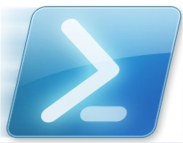Rick Richter is CIO of Food for the Hungry. In this interview Rick explains why his organization is moving all of its computers to Ubuntu.

Ethiopian farmer Ato Admasu. Photo credit Food for the Hungry.
John: Tell me a little about Food for the Hungry and what you do there.
Rick: Food for the Hungry is a Christian relief and development organization. We go in to relief situations—maybe there has been a natural disaster or war—and provide life-sustaining needs: food, shelter, whatever the need may be. For example, the recent earthquake in Haiti. But the other part of what we do is the sustained, long-term development on the community level. The idea is to work with leaders and churches to better take care of themselves rather than relying on outside organizations for support.
I’m the CIO. I’m in charge of the information and technology for the organization. We’re in 25 countries. I have staff all over the world, about 25 people. There are about 12 who work directly for global IT, mostly in Phoenix, and the rest in various countries. There are also people who work directly for local offices, for example in Kenya, that coordinate with global IT. We’re responsible for about 900 computers.
John: You and I were talking the other day about your organization’s project to move all its computers over to Ubuntu.
Rick: We started an informal process to convert to Ubuntu two and a half years ago. It started when my son went to Bangladesh. He spent the summer there and converted some of their computers to Ubuntu. At first we didn’t have full management support for the process. They don’t really understand it and it scares them.
There were individual country directors interested in the project and I talked it up. There’s some independence in the organization to make those kind of decisions. Now, for the first time, we have full support of management for the conversion on a wide scale. I’m going to Cambodia next week. Right now they’re all running Windows but before I leave they’ll be running Ubuntu. In Asia we probably have about 80% of our computers on Ubuntu. We don’t have big offices in Asia. Our bigger offices are in Africa and they’re a little slower to adopt. Until now, a lot of it depended on whether the local country director was ready to change.
We found it was important for a number of reasons. One is security. Linux is not as vulnerable to viruses. We have so many places where entire computer systems have been totally crippled because of viruses. A lot of networks are very primitive, so the network is basically a thumb drive between offices in a country. A thumb drive is the best way to transmit viruses you can find.
We’ve also found in the last few years anti-virus software has become less and less effective. Three or four years ago, if you had up-to-date anti-virus software you wouldn’t get a virus. These days, you still get them. Some of our staff have other jobs within FH besides their IT responsibilities and may not have a lot of IT experience. As a result, staff often do not have the time to pro-actively manage IT.
Another issue is maintainability. Windows computers don’t run as well over time. With Ubuntu, when we come back to a computer two years later it’s in as good a shape as we left it.
Linux requires much less hardware to run than Windows. We have eight- or nine-year-old computers at a lot of our sites that will no longer run or barely run Windows.
John: So saving money on software licenses is a benefit, but not the main consideration.
Rick: Saving money on licenses is important, but it’s not the driving force. We’re a non-profit and we have a contract with Microsoft where we get pretty good prices.
Another reason for moving to Ubuntu is that in some countries it is very difficult to legally obtain licenses. Sometimes it’s next to impossible. You can’t buy legal Microsoft licenses in some places, or if you can, the price is outrageous. So many legalities and so many weird hoops you have to jump through.
As a Christian organization we need to set a good example and make sure all our licenses are legal. We want to be clear and up-front about our software. Ubuntu eliminates that problem.
John: What experience have you had retraining your IT people to support Linux?
Rick: We have IT professionals and we have people who are much less skilled. Most of the IT people who do the support have really bought into it. They’re excited about it and they’re pushing it. Those who do support in the field who have had less exposure, some of them have bought into it, some have not as much. It requires time. It requires dedication. It also required commitment from their management.
Related posts


